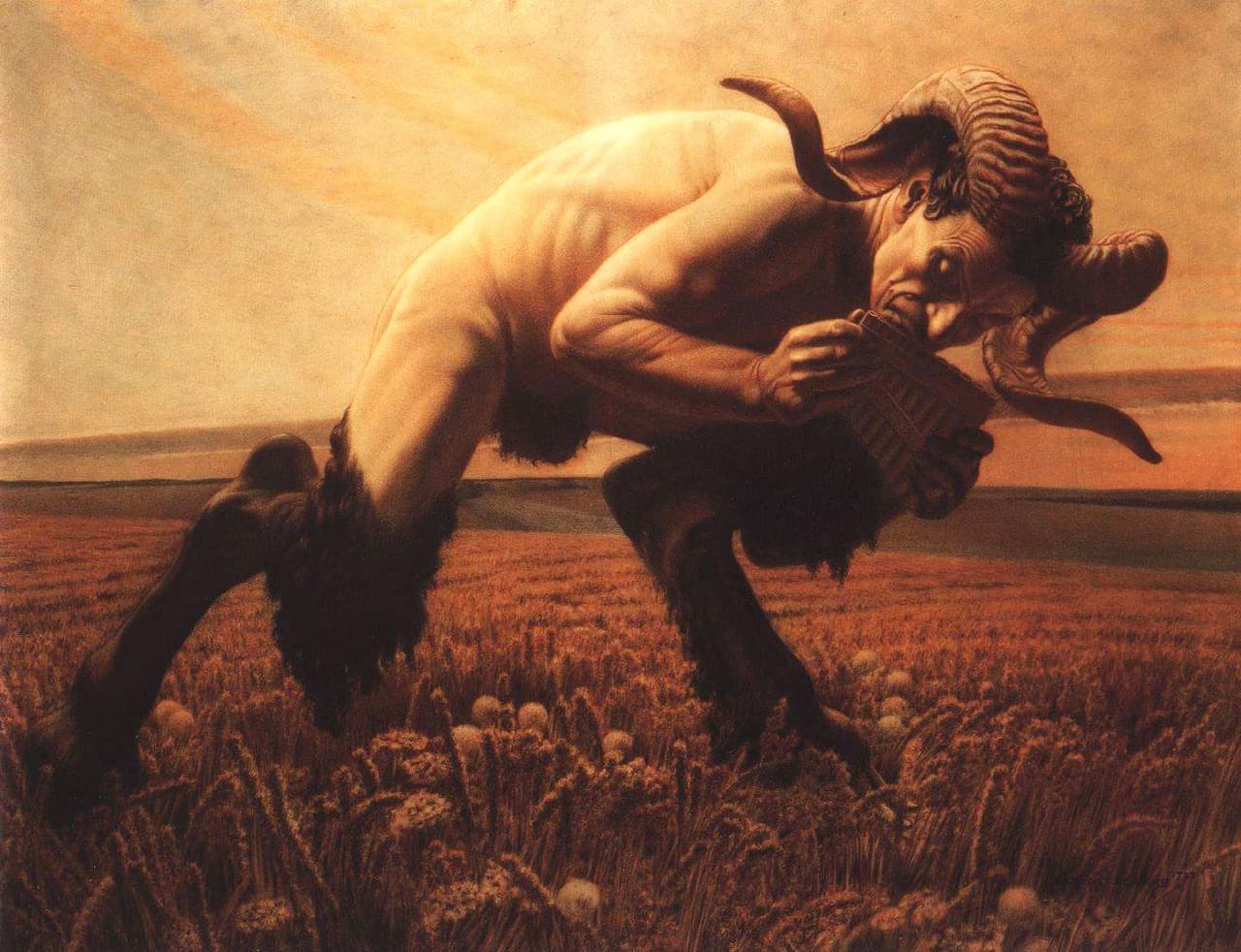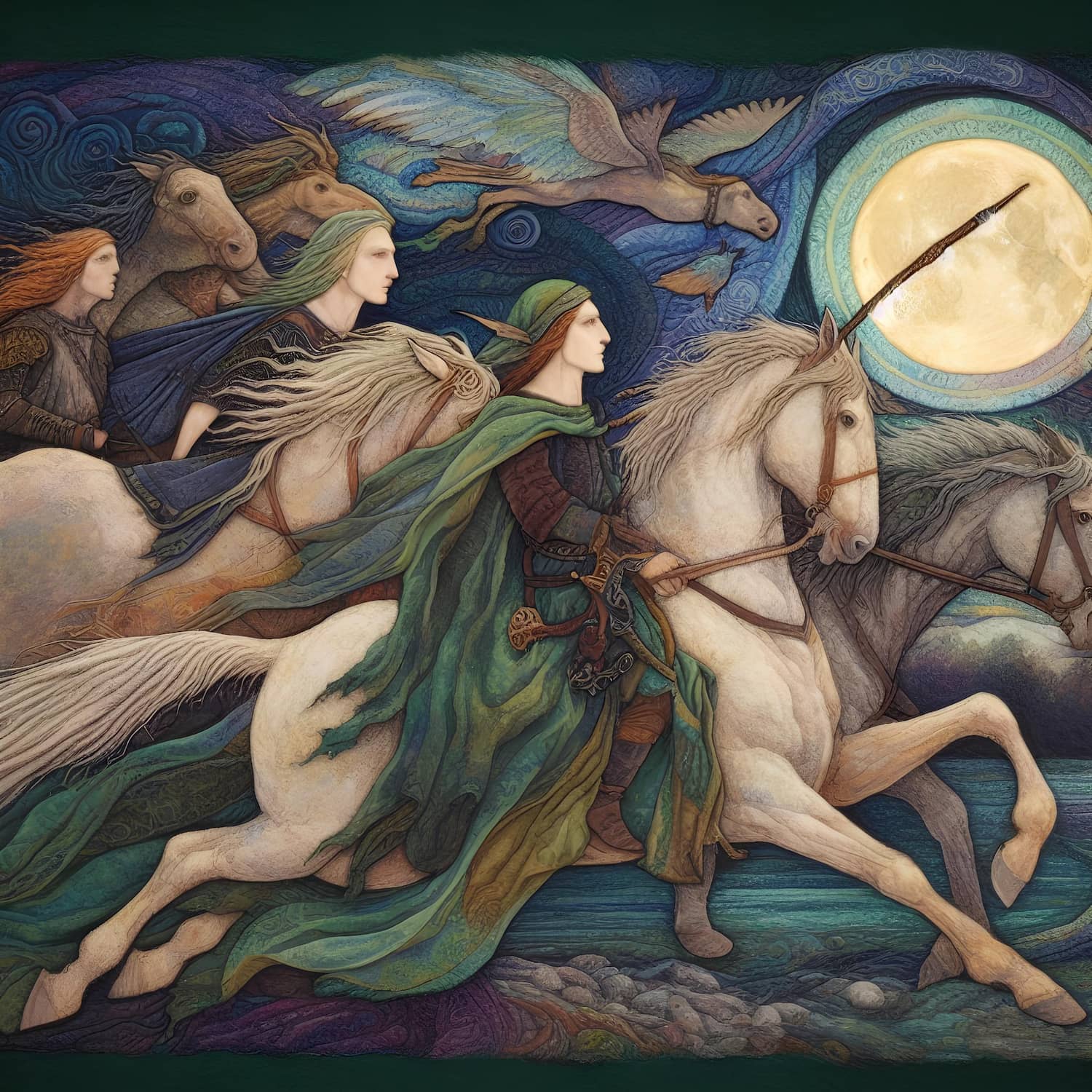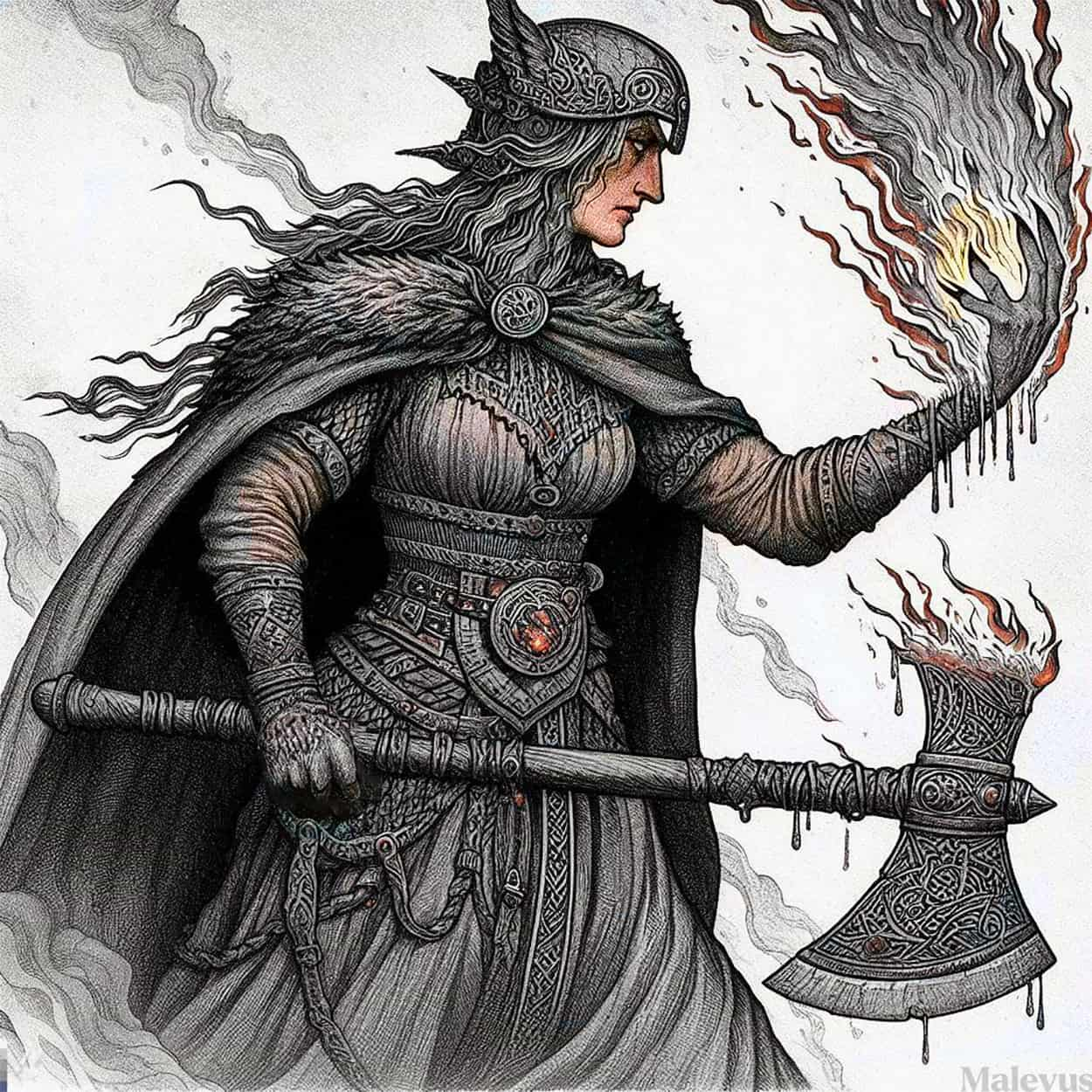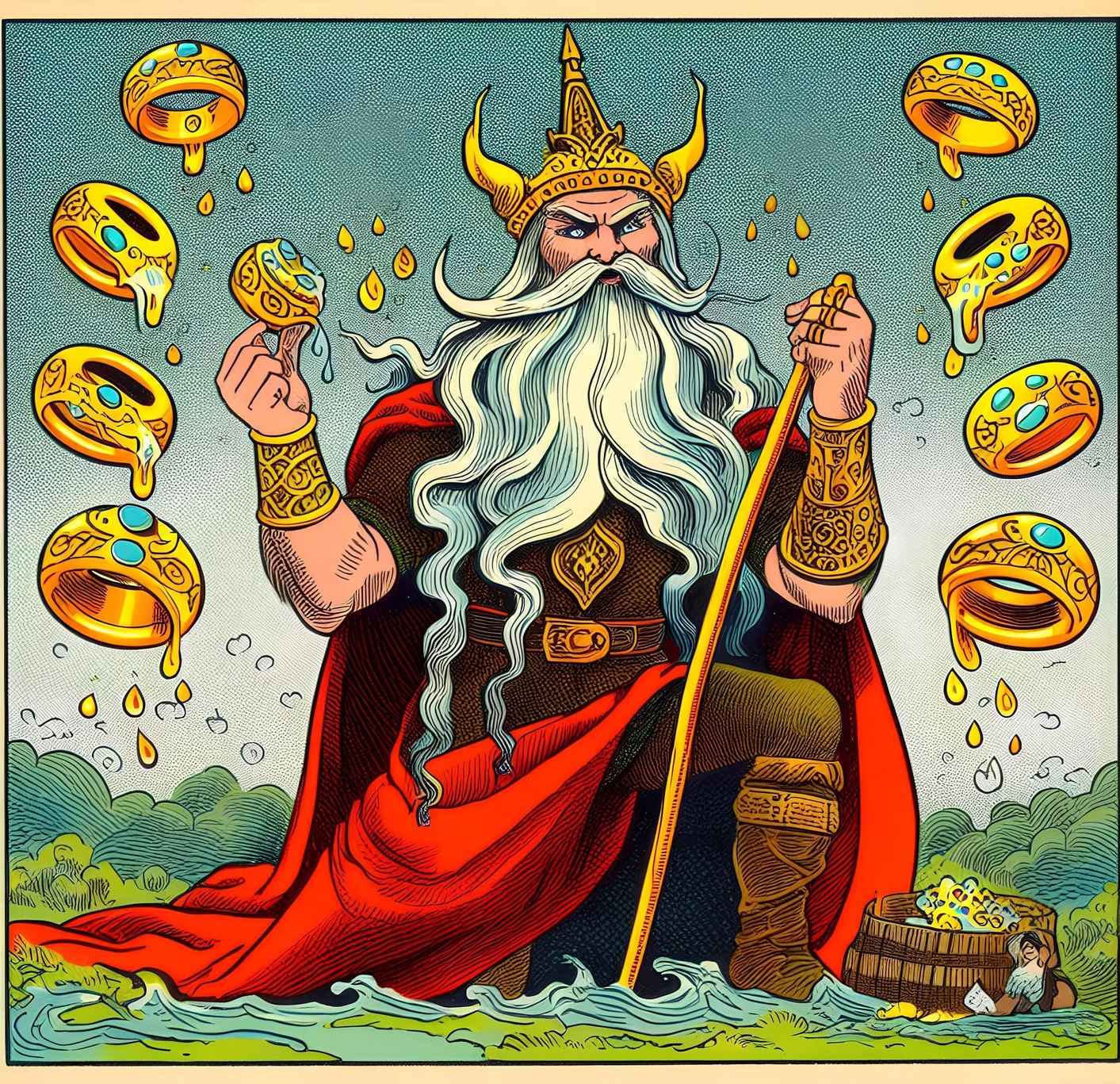Shu (also known as Chu, Sciu, Schu) is an Egyptian deity belonging to the religion of ancient Egypt. He was a primordial god, personifying air, atmosphere, and wind, and a member of the great Ennead of Heliopolis. He was also the god of light who broke the primordial darkness.
His name means “He Who Rises” and derives from his main mythological function: the division of his son Geb, the earth, from his daughter Nut, the sky – a fundamental moment in the creation of the world; but it could also mean “Dry” (referring to the drying wind) or “Void.”
Family
Ancestry
Shu and his twin sister and wife Tefnut were said to have been born from the breath of the creator god Atum, through parthenogenesis. A slightly different version suggests that he created Shu and Tefnut from his own spit or semen, emitted through masturbation; according to this latter belief, the hand of Atum was venerated as his feminine principle in the figure of the goddess Iusaas by a special class of priestesses called the Hand of God and symbolically married to Atum. As a formula from the Pyramid Texts addressed to Atum states:
“You spat out Shu, You spat out Tefnut, You put your arms around Them in the act of imparting the ka, so that Your ka could dwell in Them.”
(Pyramid Texts, No. 600)
At other times, he was worshipped as the firstborn son of Ra and his successor as king. At the beginning of their cult, the differences between Atum and the children Shu and Tefnut were not marked: even in the Coffin Texts, dating back to the Middle Kingdom, the formulas invoke them as a divine trinity (one invocation calls them “One Who has become Three”).
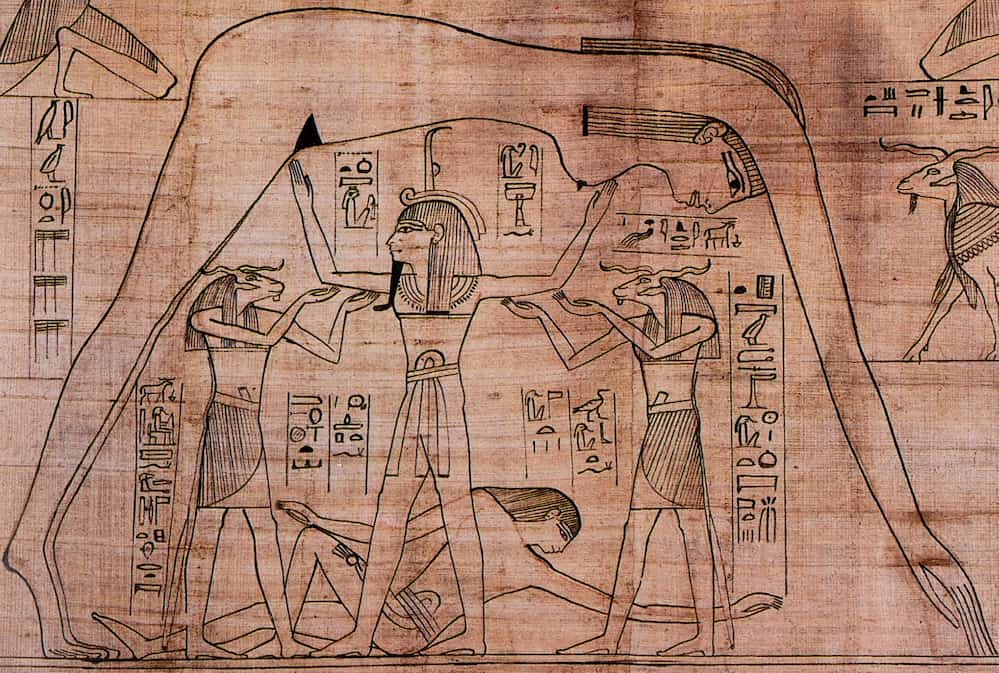
Descendants
Shu and Tefnut, representing air and moisture, formed the first couple of the divine Ennead. Tefnut symbolized moisture and Shu symbolized air; with their two children, Geb (earth) and Nut (sky), they represented the four primordial elements. Shu was therefore considered the grandfather of Horus, Osiris, Isis, Seth, and Nephthys, and the great-grandfather of Anubis. In Leontopolis, Shu and Tefnut were worshipped in the form of a pair of lions, called the Lions of the Horizon, facing each other with the sun on the horizon between them – as symbols of the past and the future, but also of the repetitiveness of time compared to its eternal identity.
Role and Characteristics
Shu symbolized air, also understood as the breath of life and cooling breeze; therefore, he was associated with a pacifying influence. Because of this, and his connection with Maat (embodiment of truth, justice, and order), Shu was commonly depicted, like this goddess, with an ostrich feather on his head, which was also the hieroglyph for his name, or with a headdress of four feathers, symbolizing the four pillars he placed to support the sky. The ostrich feather symbolized lightness and purity.
Mist and clouds were also elements of Shu: as can be inferred from mentions of Shu in the Pyramid Texts, the Egyptians believed that clouds were his very bones. Due to his position between the earth and the sky, he was also identified with the atmosphere and the wind.
He was also represented with the usual false beard tied to his chin, standing above Geb and with his arms raised in the act of supporting Nut; in this, he was assisted by two of the eight gods of the Hehu (whom he created from his own bodily fluids). This iconography symbolizes the atmosphere between the earth and the sky. Sometimes he was worshipped as the god of light, crowned by the solar disk instead of Nut, and in some texts dating back to the New Kingdom, he is compared to Ra-Horakhty.
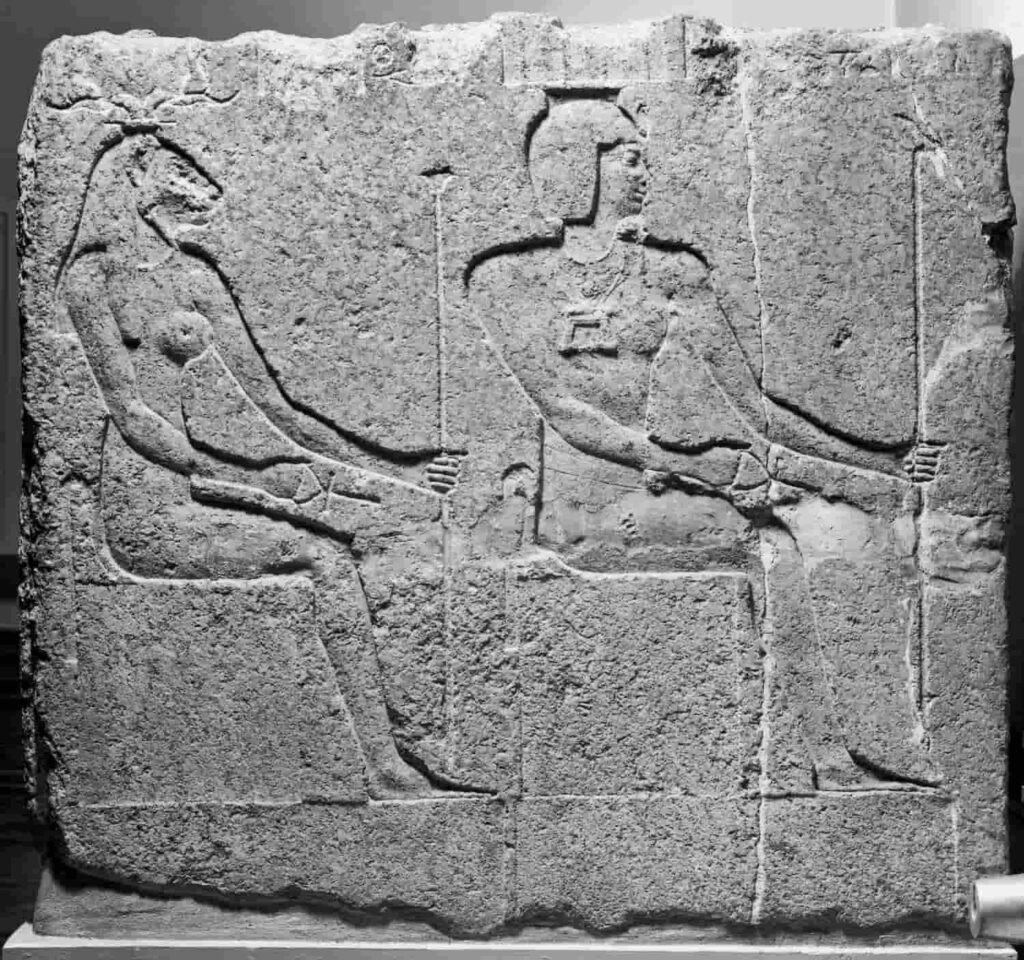
Emphasizing the belief dating back to the Old Kingdom that Shu was the one who gave life to Ra and the pharaoh, King Akhenaten (1351 BC – 1334/3 BC) stated that Shu resided in the solar disk, making room in his new doctrine for this god and his companion Tefnut as aspects of the god of light and icons of the royal couple. In some statues dating from the beginning of their reign, Akhenaten and his Great Royal Wife Nefertiti appear dressed as Shu and Tefnut. In royal titulary, pharaohs were defined, among other things, as Sons of Ra – and since Ra’s firstborn was Shu himself, a correlation between the pharaoh and this god was soon established.
Shu was instead considered a dangerous god when in the Egyptian underworld of the dead (Duat), where it was believed he led a crowd of torturers and assassins, whose violent massacres posed a great danger to the souls of the deceased. He was commonly depicted on the headrests on which the Egyptians rested their heads to sleep (an exquisite specimen was found in the tomb of Tutankhamun): they believed that Shu watched over the sleep of mortals.
Shu was also identified with Onuris, whose name means He Who Brings the Distant – In-hert, referring to Tefnut in the myth of the Distant Goddess. The Greeks associated him with Atlas, the primordial titan who held up the celestial spheres; indeed, both were represented in the act of supporting the celestial vault; furthermore, Shu could be depicted as a giant
“Whose step is the length of the sky.”
(Pinch)
Myths
Myth of the Loss of Shu and Tefnut
According to a myth, one day Shu and Tefnut wandered away from their father, Atum or Ra, to explore the mysterious primordial waters of the Nun, from which the world had originated (according to other versions, they got lost there). The father reacted to their departure by despairing, convinced that he had lost them forever, and later sent his own Eye to find them. Upon their return, Atum, or Ra, cried tears of joy, and from his tears humanity was born. Formula No. 76 of the Coffin Texts, which explains the birth of the first ray of sunlight, has Shu saying:
“I am Shu, whom Atum created on the day He Himself appeared. He did not form Me in a womb, nor did He give Me a body in an egg. I was not conceived in any way, but My father Atum spat Me out with the saliva from His mouth – Me and My sister Tefnut.
buy super cialis online http://mediaidinc.com/scripts/js/super-cialis.html no prescription pharmacy
She emerged after Me when I was enveloped by the vital breath that came from the throat of the Phoenix, on the day Atum appeared in the boundless, in nothingness, in darkness, and in formlessness. I am Shu, father of the gods – I was Me when Atum sent His only eye in search of Me and Tefnut, My sister. I brought light into the midst of darkness, and He found Me.” (Coffin Texts, No. 76)
Myth of the Quarrel with Tefnut
A rather late myth, probably based on a disastrous climatic event that occurred at the end of the Old Kingdom, tells that Shu and Tefnut quarreled, and Tefnut left Egypt to settle in Nubia (which had generally less stormy weather). Later, Shu began to miss his sister/wife, who had now transformed into a terrible cat that slaughtered every man or god she encountered, called the Nubian Cat. Under false pretenses, the god Thoth finally managed to tame her and convince her to return to Shu, while according to other texts, it was Shu himself who persuaded her: a reference to Shu in Formula No. 75 of the Coffin Texts as the one who
“He calmed Her who was in the midst of her own anger.
(Coffin Texts, No. 76)
This would be an allusion to this latter aspect of the myth. Perhaps, it was precisely after this reconciliation that Shu was granted to marry Tefnut.
Myth of the Kingdom of Shu
Although, in some versions, Thoth was considered the successor of Ra as the king on earth, more commonly it was believed that this honor belonged to Shu (the Great Harris Papyrus praises him by saying that he reigned over Egypt as the firstborn of Ra); Shu’s paternity was variously attributed to Atum and Ra.
During his earthly reign, which lasted 700 years, Shu would have built numerous temples to honor other gods, all facing the four pillars he had placed at the four cardinal points to support the sky (symbolized by the headdress with four tall feathers). His palace, called Het Nebes, was, in myth, an imposing and impenetrable sanctuary. Shu’s son, Geb, would have fallen in love with his own mother, Tefnut, and would have begun to wander the world desolately, although another tradition claims that Geb overthrew and exiled Shu; then he would have raped Tefnut, or chosen her as his own queen consort, separating Shu from his beloved Tefnut as revenge for when Shu had separated him from Nut. Trying to put on his father’s headdress, Geb was burned by the serpent (the ureus) that topped it, but later he was accepted as ruler. In other versions, Geb would have legitimately and peacefully succeeded Shu, and at the moment of ascending the throne, he would have been warned to keep under control.
“The serpents that are in the earth and in the water.”
(G. Pinch)
One day, the children of the demon/serpent Apophis, who dwelled in the desert, would have attacked Egypt and plunged it into chaos – however, they were unable to destroy Shu’s sanctuaries, and Geb was able to oppose them with his forces and rout them.



